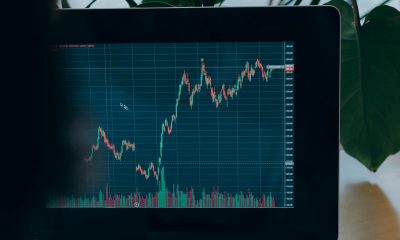Business
The safest way to creating retirement income in 2017
Equity is a great alternative for those looking for long-term retirement income.

Despite the fact that interest rates are moving up, it’s still impossible to earn enough interest on bank deposits to put a dent in your cost of living. Even when rates were much higher in the past, bank CD returns never yielded much in the way of return after you consider taxes and inflation.
But all is not lost. There are still great alternatives for investors who need long-term retirement income. What follows is a discussion of one of the most attractive income-producing investment alternatives you might consider in 2017 and years thereafter – equity.
Equity
Some investors believe that equity investing is for young risk-takers who want to grow their money. This is true; there is a place in the market for people like that of course. But the market can also be an attractive option for people looking for retirement income.
What I’m talking about is investing a portion of your portfolio in stocks or growth ETFs or funds. Even if those stocks or funds don’t pay dividends you can still sell off a small amount of the portfolio at the end of the year and use it as income.
Of course, there will be years where the portfolio losses money. And when that happens it will be emotionally difficult to withdraw funds and see your account values drop even further.
As emotionally hard as I know this is, it’s still a smart strategy. Sure there will be years where the market drops. But there will be other years where the market goes up far more than the 4% you withdraw. When it does, it builds up a buffer which you can use to offset the years when the market drops. That’s why this is a long-term income strategy and one you can’t evaluate on a year-by-year basis.
Don’t just accept my word for this. There have been numerous studies that support this idea. The most notable of these is the Trinity Study. This research was done years ago and updated recently.
You can read the entire report by following the link provided above. But the bottom line is that if you want to create long-term retirement income, your best bet is to have at least some portion of your portfolio invested in equity.
The study found that over many 30-year periods, one of the most sustainable ways to create retirement income was to invest in a portfolio made up of 50% fixed income and 50% equity, withdrawal 4% per year and adjust that annual withdrawal for inflation.
This isn’t foolproof. First of all, this study looked at historical data and that’s no guarantee of future results. Second, even during these research periods, there were times when the market dropped and the portfolio return was negative. When the account value drops and you take a withdrawal on top of that, it’s frightening as I mentioned above.
So in any specific year, using this strategy, you could very well withdraw more than you earn. But as I said earlier, there will be other years when the return will be far greater than the 4% withdrawal rate to make up for this.
Equity is a great alternative for those looking for long-term retirement income. But there is always the worry that you retire and start pulling your withdrawals just when the market hits the skids. That could be ugly.
Indeed, if you retired in 2008 and had all your retirement money invested in equity, you could have very easily lost over 40% of your money within a few short months. If you took that kind of hit and maintained your withdrawals on top of that, you would run the real risk of going broke quickly.
Fortunately, there are two good defenses to this problem. First of all, for most people, you don’t need to invest 100% in equity in order to create the income you need. That being the case, you can theoretically reduce your risk big time by scaling down your exposure to the market while still receiving the benefit of inflation-adjusted income.
Case in point, a balanced portfolio might only have lost 15% during the financial crisis of 2008. That’s painful no doubt but far less difficult to overcome than the whopping 40% losses we spoke of earlier.
And the second defense to this issue is to be proactive about your investing. Be more conservative when risks are higher and more aggressive when the market shows more opportunity. I’m not talking about using your gut feeling to make such assessments. Rather, use a numbers-based objective approach to guide your investments. This isn’t foolproof, but there are alternatives which are easy to implement that can theoretically help you grow your money safely, create the retirement income you want and at the same time potentially helping you sidestep steep market corrections.
—
DISCLAIMER: This article expresses my own ideas and opinions. Any information I have shared are from sources that I believe to be reliable and accurate. I did not receive any financial compensation in writing this post, nor do I own any shares in any company I’ve mentioned. I encourage any reader to do their own diligent research first before making any investment decisions.

-

 Markets2 weeks ago
Markets2 weeks ago2025 Chaos, Concentration, and the Road to 2026
-

 Business3 days ago
Business3 days agoThe TopRanked.io Weekly Digest: What’s Hot in Affiliate Marketing [Super Partners Review]
-

 Biotech2 weeks ago
Biotech2 weeks agoAsebio Welcomes the EU Biotech Act as a Boost to Competitiveness and Health Autonomy
-

 Biotech7 days ago
Biotech7 days agoChai Discovery Becomes a Unicorn with $130 Million Series B to Accelerate AI-Driven Drug Design

























You must be logged in to post a comment Login